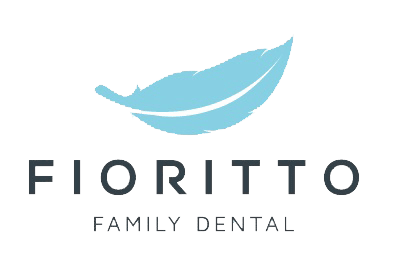Bone Grafting for Implants
A smile helps to make a good first impression and can reveal an outgoing personality, but only if one is confident enough to flash it. When you lose a tooth, it can understandably impact your self-esteem and willingness to smile. Tooth loss is more than a physical issue – it can affect a person emotionally and socially. At Fioritto Family Dental, our dentists specialize in dental restoration, including bone grafting for implants and placing dental implants. Dental implants can restore beautiful smiles and oral function. To be a good candidate for a dental implant, one must have sufficient bone and bone density to support the implant.
Can a patient have an implant if he/she does not have sufficient bone or bone density?
The short answer is yes. For instances where bone or bone density is insufficient, a bone graft procedure can be performed prior to having a dental implant. A bone graft is performed to strengthen or increase the supporting bone structure in the jaw.
Here are a few thing patients should know about bone grafting:
Reasons for Bone Grafting for Implants
The bone of the jaw and the roots of your teeth enjoy a mutually beneficial relationship. The jaw bone holds the roots firmly in place for tooth stability, and the roots fill the socket to keep bone from deteriorating.
When you lose a tooth, and the jaw no longer has a root system to support it, the bone begins to deteriorate almost immediately. The longer you wait to replace the tooth, the bigger the problem will become.
What is a Bone Graft?
You don’t always have a choice about how quickly you can receive an implant. In some cases, the presence of infection can delay the progress, or a patient may have to heal after trauma before the implant procedure can take place. In other situations, some patients exhibit bone deterioration before a tooth is even lost, perhaps due to unrelated health conditions.
Regardless of the reasons, a bone graft procedure can help to bolster the jaw bone and create needed stability for the implant. There are several bone graft options, and our experienced dentists will review all of the options that may be suitable for a particular patient.
Autograft, allograft, xenograft or alloplast… what are the differences?
An autograft bone graft uses one’s own bone, taken from another site within the mouth, , while an allograft bone graft relies on human cadaver bone. A xenograft bone graft, uses animal bone (from a cow, for example), and in the case of an alloplast procedure, synthetic materials are used to strengthen or add bone-like material.
What to Expect
The bone grafting procedure is relatively straightforward. Often, only local anesthetic is required, although sedation dentistry is available for patients who suffer from dental anxiety or other concerns.
During the procedure, a small incision is made in the gums and bone grafting material is implanted, perhaps with membranes and/or tissue-stimulating growth factor proteins to improve the chance of a successful grafting. It could take up to several months for the graft to completely heal, after which the patient is ready to receive an implant.
Tooth loss doesn’t have to be a life sentence. With help from the caring and qualified dentists at Fioritto Family Dental, we can restore a brilliant smile and regain oral function. Contact us today at 440-951-5511 or reach out to us online to schedule an appointment or to learn more.

